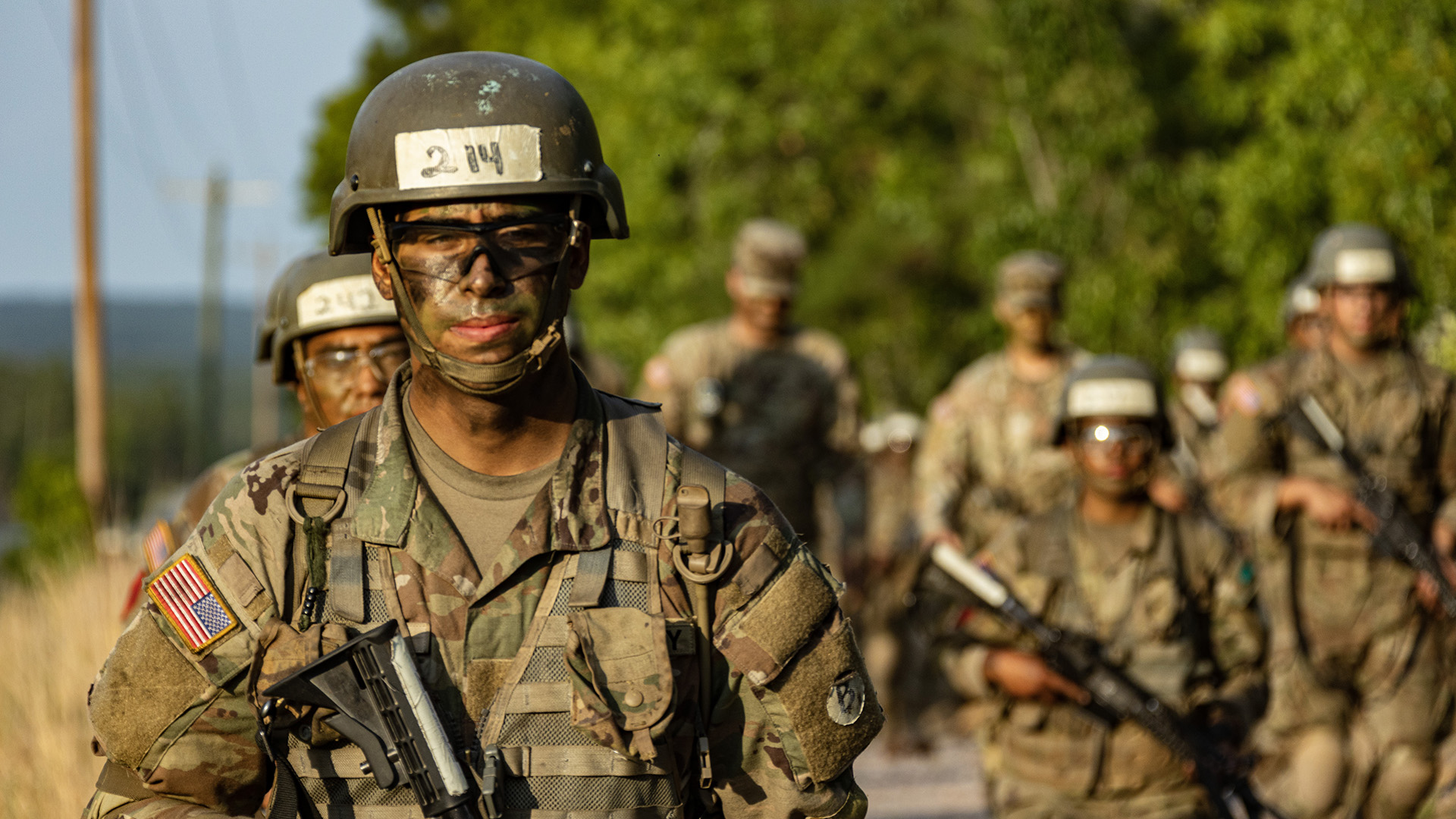

By the time new soldiers get to their first unit, they have faced being hunted by a swarm of drones, according to the head of U.S. Army Training and Doctrine Command.
The Army has revamped the Forge, which has been the capstone event of basic training for over half a decade, based on lessons learned from the war in Ukraine, Gen. Gary M. Brito told Task & Purpose in an exclusive interview on Wednesday.
“It’s exposing them to operational threats that they may see if they were to deploy tomorrow, and also so they haven’t seen it for the first time when they join whatever unit they’re going to join,” Brito said.
Dubbed “Forge 2.5,” the 96-hour field training exercise has been updated over the past year so that Army trainees learn how to conceal themselves from drones, Brito said. That includes training on how to limit their electronic signatures and decrease the size of command posts so that they don’t pose tempting targets.
“If you can be seen, you can be hit,” Brito said. “Although one drone may have a very small munition of some type, just consider what a swarm of them could be.”
The drones themselves are provided by the Maneuver Center of Excellence at Fort Moore, Georgia, he said.
Subscribe to Task & Purpose today. Get the latest military news and culture in your inbox daily.
The U.S. military has long been concerned about the danger posed by cheap and commercially available drones. In February 2021, the head of U.S. Central Command at the time warned that drones represented the biggest threat to U.S. troops since insurgents in Iraq began using improvised explosive devices, or IEDs.

First-person drones have proven to be a particularly lethal weapon for both Ukrainian and Russian troops, with both sides using them to attack personnel and equipment.
The Army is currently developing new 25 and 30mm rounds with proximity sensors that Bradley Fighting Vehicles and Apache helicopters can use to destroy drones.
One lesson from the Ukraine war is that when U.S. troops deploy to combat zones, they must be constantly aware that “literally the sky above you, just above the treetops, can be buzzing with danger,” said Samuel Bendett, a Russia team member with CNA, a non-profit research and analysis organization in Arlington, Virginia.
“The U.S. military is not used to not controlling the zero to 2,000-feet altitude, where a lot of this drone activity is actually taking place,” Bendett told Task & Purpose. “That is, the U.S. military is used to having the Air Force controlling the skies, clearing the skies of adversarial assets. But a lot of fighting In Ukraine isn’t necessarily at higher altitudes, even where helicopters are flying.”
In Ukraine, drones provide constant observation over both Russian and Ukrainian forces, Bendett said. That means U.S. troops must train how to maneuver in a drone-saturated environment.
“Essentially, the main lesson is: Any large group of anything — whether it’s humans, systems, weapons — will be a potential target,” Bendett said. “The movement must be in as small of a group as possible as quickly as possible. You don’t move 20 soldiers at once. You try to move in small groups, for example, with ample distance between soldiers. You move at different times of the day. You don’t emanate a lot of signals when you move.”
In addition to the revamped Forge 2.5, Brito said, soldiers are also learning how to counter drones during home station training and basic officer leader courses. Army units are also experimenting with how to use and defend against drones at combat training centers.
All this training underscores how the Army is focused on preparing soldiers for future threats before they face them on the battlefield, Brito said. As more threats arise, they will also be incorporated into Army training.
“So, ultimately, the soldiers won’t see it for the first time in real combat,” Brito said.
The latest on Task & Purpose
- Inspired by son, father reenlists in Navy 20 years later
- National Guard major sets burpee world record
- National Guard investigates Black Hawk filmed flying low over hurricane relief site
- Why Lionel Richie’s face is on the side of a Chinook in North Carolina
- How Moody Air Force Base rode out a direct hurricane hit
